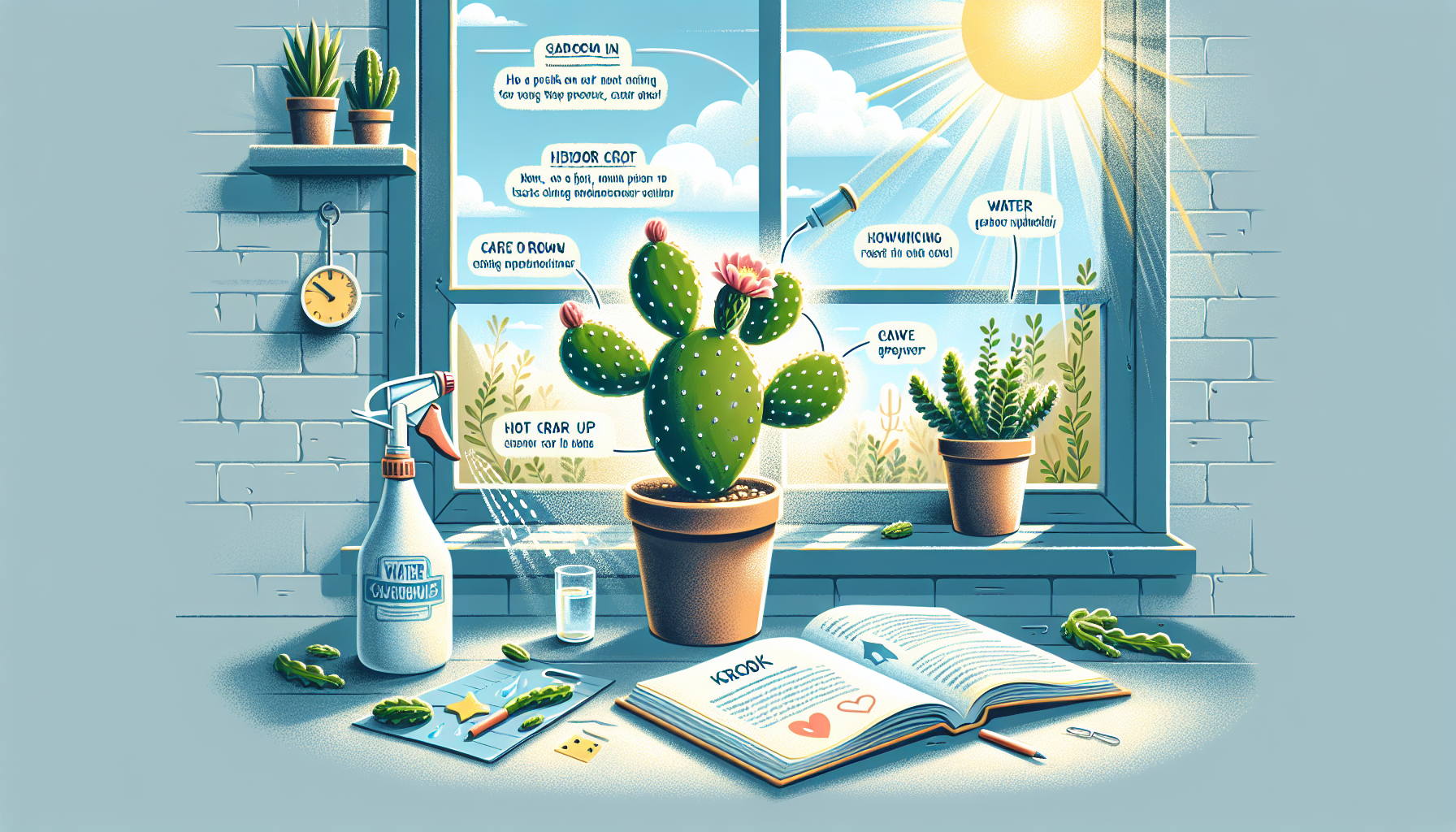Adding greenery to the indoors has always been a delightful way to enhance the living space. It brings a hint of nature to the ambiance and also helps to cleanse the air, making your home a healthier space to live. One such indoor plant that has gained popularity recently is the prickly pear cactus. In this blog, we’ll be exploring how to grow and care for this exotic cactus, known not only for its aesthetic appeal but also for its additional security features.
Know your prickly pear cactus
The prickly pear cactus, also known as Opuntia, originates from the arid regions of the Americas. It has a unique paddle-like appearance and replete with spines, giving it the ‘prickly’ adjective. These spines serve as natural security against potential burglars, as well as a deterrent for pests and unwelcome critters. But the prickly pear is not all prickles. Its brightly colored flowers can be a delightful sight, and its fruits, known as ‘tunas’, are edible and rich in antioxidants.
Planting at the 💚 of your indoor gardening
Potting the cactus
Begin by choosing a pot with adequate drainage. Cacti, in general, are prone to root rot and prefer dry surroundings. Next, use a sandy, well-draining soil and plant the prickly pear paddle (the branch) about an inch into the soil. If you have a small cutting, let it callous for a few days before planting.
Light and water requirements
Position the pot in a sunny window where the cactus will receive lots of bright but indirect light. Prickly pears are sun-loving plants and can withstand scorching heat in their native desert environments, but too much direct sunlight can burn the paddles.
When it comes to watering, remember that less is more. Water the prickly pear sparingly, allowing the soil to dry out completely between watering sessions. In the wintertime, you can reduce watering to a minimum as the plant goes into its dormant state.
Pests and trouble signs
Watch out for pests such as mealybugs and spider mites. If you notice webbing or cottony residue on the plant, it could be a sign of an infestation. Also, watch out for yellow, shrivelled paddles. These can indicate over-watering or lack of sunlight. With proper care, however, your prickly pear cactus should thrive and become a unique addition to your indoor garden.
Security and sustainability wrapped in spines
Did you know that your prickly pear cactus can be your home’s mini security guard? It adds an extra layer of security when placed near windows or entry points, potentially discouraging intruders. Despite its indoor role, this cactus is an emblem for sustainability. It can survive in harsh conditions, needs minimal resources, and gives back to its environment by producing edible fruits.
Finally, growing prickly pear cactus at home is not only an exercise in indoor gardening and aesthetic appeal but also an exploration of sustainability and innovation. It demonstrates how we can bring together elegance, functionality, and eco-friendliness in our living spaces. So why not welcome this prickly friend into your home and experience its many benefits firsthand?
Emma Johnson is a passionate and insightful writer specializing in the house and garden niche, bringing over a decade of experience to her readers. At the youthful age of 34, Emma has already established herself as a leading voice in home improvement, landscaping, and interior design. Her journey began with a degree in Landscape Architecture from the University of Georgia, followed by years of hands-on experience working with renowned landscaping firms across the country.
Emma’s writing career took off when she started sharing her unique ideas and eco-friendly gardening tips on her personal blog. Her ability to blend practical advice with aesthetic design quickly garnered attention, leading to her current position as a featured columnist for a prominent online news site.
Dedicated to sustainable living and innovative design, Emma’s articles offer a wealth of knowledge, from DIY home projects to the latest trends in garden technology. Her work not only enlightens homeowners looking to enhance their living spaces but also inspires a deeper appreciation for the environment.
When she’s not writing or experimenting in her own garden, Emma enjoys mentoring young designers and participating in community beautification projects. Her contributions extend beyond her written work, embodying her commitment to making the world a more beautiful and sustainable place, one home at a time.
